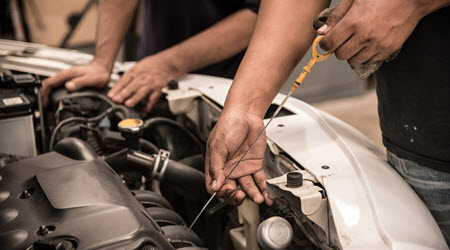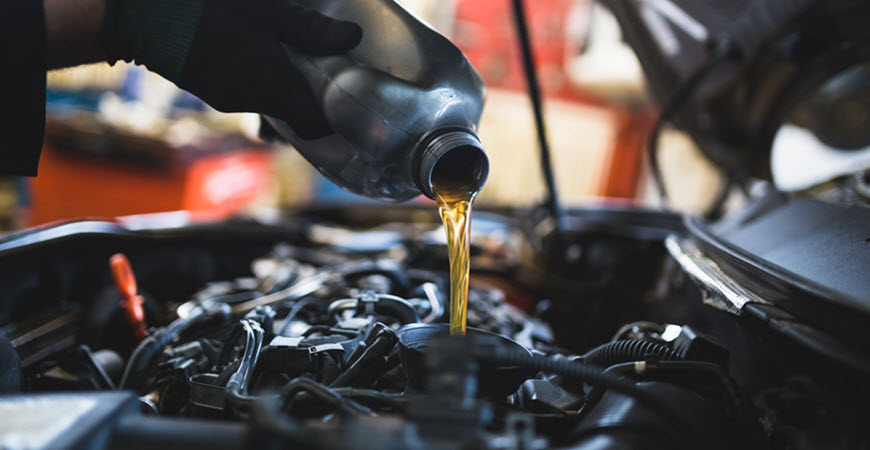Aside from gas, tire pressure, and antifreeze, the other main element to take care of in a car’s most basic of maintenance routines is changing the oil. But how often should you change the oil out? How do you know when your car needs new oil? All these questions will be answered in this article as we take a closer look at the ideal times to change your vehicle’s oil.
What does the car use oil for?
In a car, the engine oil is used to keep the engine well lubricated, keeping all its parts mobile, and able to move as required. The engine oil can also help to keep these parts clean as well as offering a level of cooling and protection from minor contaminants.
How often should I change the oil?
Most mechanics recommend for optimum results that you change your oil every 3,000 miles. However, this number can vary depending on the model of your vehicle as well as the type of journeys you use it for. If you are using your vehicle solely for errands or short journeys, then changing the oil every 3,000 miles might be excessive.
On average, for the basic day-to-day use of a vehicle, unless your car indicates to you otherwise, changing your oil around every 5,000 miles is acceptable. However, how long you leave the oil change after the 5,000 mile point is really up to you. It really isn’t advisable to push the existing oil in your car past 7,500 miles, as you could then start to risk all manner of engine degradation or damage.
How can I check the oil in my car?
Checking the oil is a relatively simple maintenance procedure, that even the most non-mechanically minded driver can undertake. To check the oil, you first need to let your engine cool. After that, pop the hood and then locate your car’s dipstick. The dipstick is relatively easy to find and is shaped like a small ring that protrudes from the engine. Carefully remove the dipstick and gently wipe it clean on a cloth or rag. Starting off your measurement with a clean dipstick will allow you to have the most accurate reading of the oil level of your vehicle. Reinsert the dipstick and remove it once more. Where the oil has coated the dipstick is the indication of your oil level. Most cars’ dipsticks will have lines indicating safe maximum and minimum oil levels. If you find the level is lower than you’d like, then it’s time to top it off with new oil.
While you are looking at the engine, it is best to also check the status of the oil itself. By touching the dipstick and rubbing a small amount of oil between your fingers, you can tell the quality of the oil. If you find it to feel gritty and almost sticky, then the oil is either old or contaminated and will need replacing.
What are Other Ways to Tell if My Car Needs an Oil Change?
It is important to be aware that the aforementioned mileage averages represent general guidelines and that the frequency of oil changes will alter depending on the model of your car, what you use it for, and the quality of the oil used at the last change either by yourself or a previous owner.
With this in mind, it’s important to be aware of the signs and signals that your car might give you if the engine oil is running low or is need of a change. An engine that is noisier than usual, an oil level that seems to drop faster than usual, as well as an indicator light on the dashboard stating that the oil is low are all signs that you should bring your car to a garage for a thorough oil check.
Changing the Oil
As the oil directly impacts the functionality of  the engine, it is best to leave an oil change to a professional mechanic. If you live in Escondido, Rancho Bernardo, Valley Center, or other areas of California, and you drive an Audi, BMW, Mercedes-Benz, MINI, Porsche, Sprinter, or Volkswagen, then Escondido German Auto Shop offers you quality service you can trust. With 5-star ratings on Facebook, Google, and Yelp, your vehicle really couldn’t be in better hands.
the engine, it is best to leave an oil change to a professional mechanic. If you live in Escondido, Rancho Bernardo, Valley Center, or other areas of California, and you drive an Audi, BMW, Mercedes-Benz, MINI, Porsche, Sprinter, or Volkswagen, then Escondido German Auto Shop offers you quality service you can trust. With 5-star ratings on Facebook, Google, and Yelp, your vehicle really couldn’t be in better hands.

